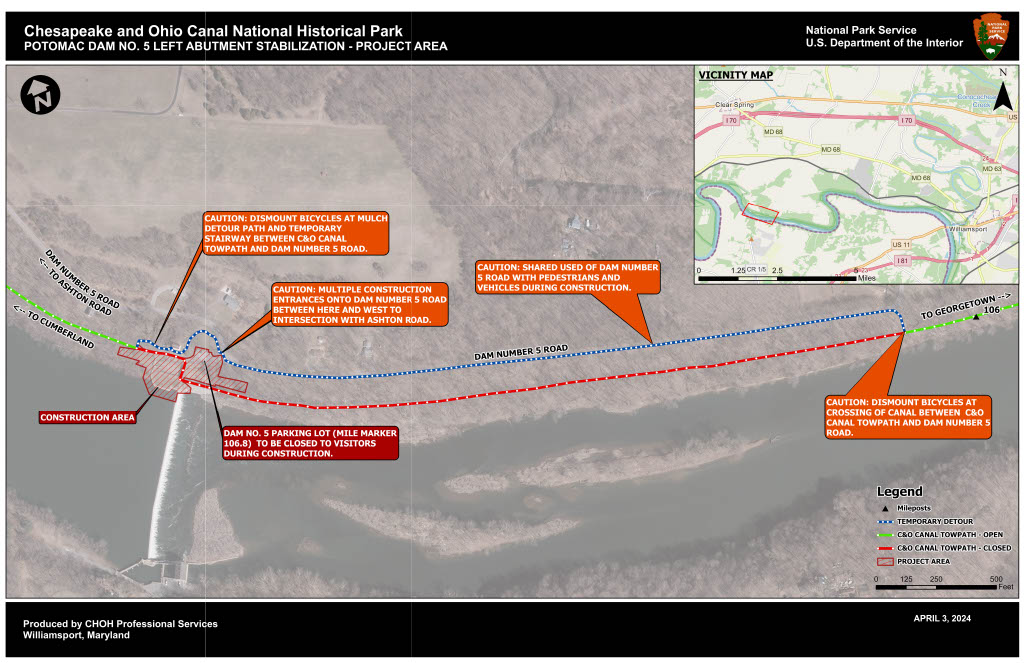News Release
You are viewing ARCHIVED content published online before January 20, 2025.
Please note that this content is NOT UPDATED, and links may not work. For current information,
visit https://www.nps.gov/aboutus/news/index.htm.

|
Subscribe
|
Contact: Christiana Hanson, 301-491-6265
Effective Dates: Week of May 20, 2024, through Fall 2025 (weather dependent)Affected Area: Mile 106 through 106.8 of the towpath, including the parking lot at Dam 5
Reason: Rehabilitation of the left abutment of the historic Potomac Dam No. 5
Detour Details:
- Start Point: Mile 106
- End Point: Mile 106.8
- Route:
- Detour from the towpath across the canal to Dam No. 5 Road
- Follow the shoulder of Dam No. 5 Road on a temporary mulch trail
- Use a temporary wooden stairway to rejoin the towpath upstream of the project
- Follow posted signage
- Dismount bicycles while crossing the canal, use the mulch trail, and wooden stairway
- Dam 5 parking lot closed
- Nearest Upstream Parking: Four Locks (mile 108.8)
- Nearest Downstream Parking: Williamsport (mile 99.7)
- Historical Significance: Potomac Dam No. 5, built between 1857 – 1870, is made of mortared limestone blocks. It ties the run-of-the-river spillway to bedrock on the Maryland shore and includes a guard lock system for boat access during the canal's operational period.
- Objective: Stabilize the historic stone dam abutment to improve safety and reduce impacts of high-water events on the towpath, historic features, and visitors.
- Outcome: Increased resilience of the park to flooding and climate-related hazards.
The construction contract for these repairs was awarded for $6.7 million and was funded from the National Park Service’s Great American Outdoor Act Legacy Restoration Fund. Visitors can learn more about the stabilization of a historic stone dam abutment and associated components on the park’s website at https://www.nps.gov/choh/planyourvisit/potomac-dam-5.htm.
-NPS-
Preserving America's early transportation history, the C&O Canal began as a dream of passage to Western wealth. Operating for nearly 100 years the canal was a lifeline for communities along the Potomac River as coal, lumber, and agricultural products floated down the waterway to market. Today it endures as a pathway for discovering historical, natural, and recreational treasures.
Last updated: May 17, 2024
